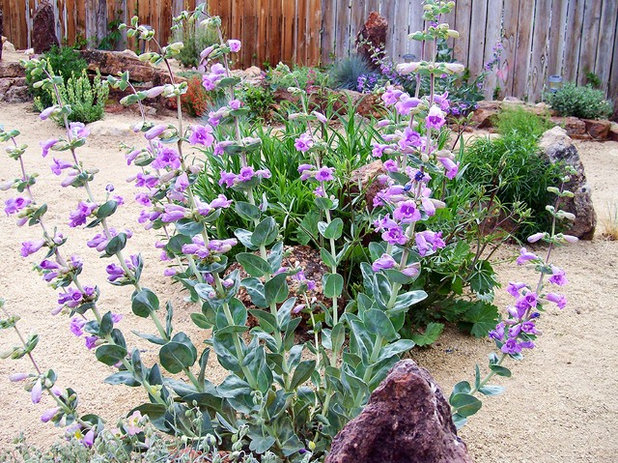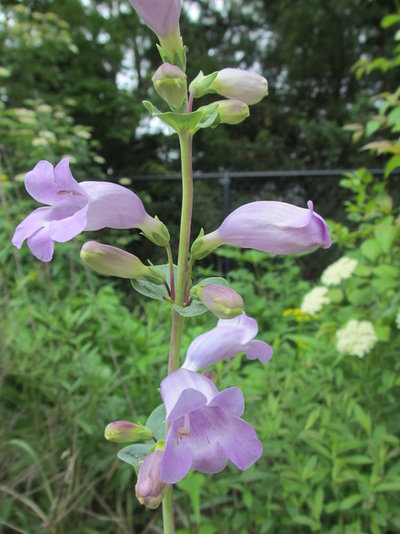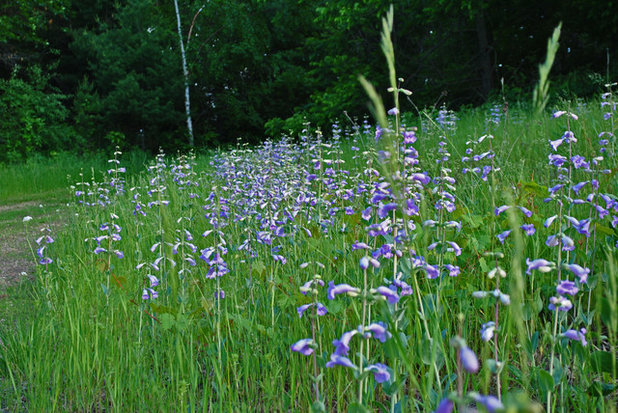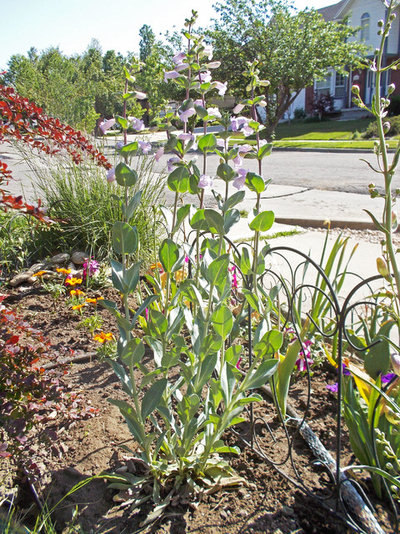Large beardtongue (
Penstemon grandiflorus), also called shell-leaf penstemon, is the grandest penstemon of them all. With large flowers and bluish foliage, it brings a coolness to the garden just as the season really begins to heat up. I think of it as a bridge plant for between spring and summer, as its soft-colored blooms echo long-gone spring ephemerals, yet its tough leaves and drought-tolerant character make it a high-summer survivor. If you have dry, gravelly or sandy soil, you’ve found your dream plant.
Not in the Central Plains? Browse plants native to other regions of the U.S.

Sierra Rain Shadow
Botanical name: Penstemon grandiflorusCommon names: Shell-leaf penstemon, large-leaf beardtongue, showy beardtongue, large penstemon, large beardtongue, large-flower beardtongue, large-flower penstemon
Origin: Native from Texas and New Mexico north to Montana and east through Wisconsin, Missouri, Indiana and Michigan
Where it will grow: Hardy to -40 degrees Fahrenheit (USDA zones 3 to 8; find your zone or find your ecorgeion)
Water requirement: Medium to dry soil
Light requirement: Full sun
Mature size: 2 to 3 feet tall and 1 foot wide
Benefits and tolerances: Very drought tolerant; good hummingbird plant
Seasonal interest: Blooms in late spring to early or mid summer; smooth, blue-gray foliage
When to plant: Potted or bare-root plants can be put in from late spring to late fall; sow seeds in late fall through winter.

Benjamin Vogt / Monarch Gardens
Distinguishing traits. This native penstemon has about the largest blooms you’ll find in the genus, at around 2 inches long. Hummingbirds like them, but you’ll also see diverse bee species crawling into the spacious blooms and enjoying their fill. Though the flowers don’t stay for more than a few days (blooming from bottom to top), the smooth, blue-gray leaves on the stems lend a coolness to the garden. Large beardtongue blooms from May to July, depending on latitude.
How to use it. It’s probably best to group a few plants, given its open and airy stems. Large beardtongue looks great in a traditional border or bed, as well as in a more prairie-style garden. Consider contrasting the large leaves of this plant with thin leaves of grasses or coreopsis for a textural pop.
The plants may reach as tall as 4 feet in more fertile soil, but the stems are hardly noticeable once they’ve finished blooming — make sure you have a midsummer something coming in to take over and fill in the bed.
 Photo by Aaron Carlson
Photo by Aaron Carlson
 Planting notes.
Planting notes. Large beardtongue is rare in the wild, owing to habitat loss and its need for well-drained soil. Most commonly seen on sandy sites, it can work in a well-drained clay or gravelly soil — moisture is its enemy and leads to root rot. Try planting it on a slope or an elevated position, or even in a raised bed. It loves the heat and sun and thrives on little rain.
Photo by Andrey Zharkikh





